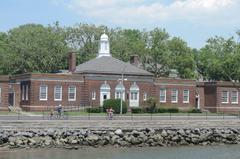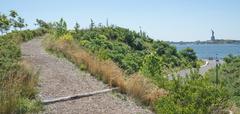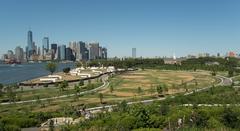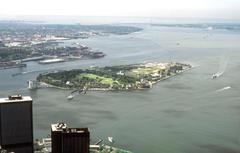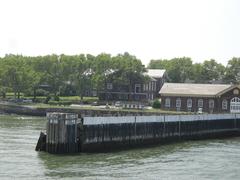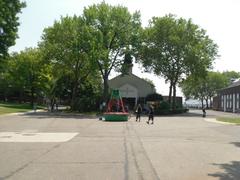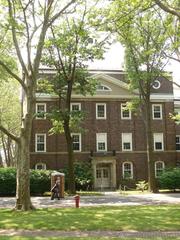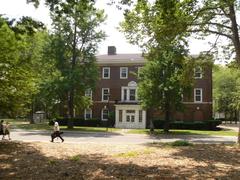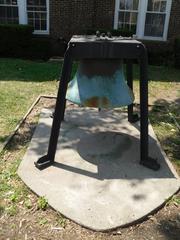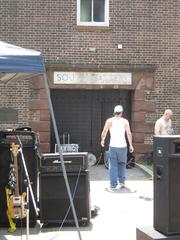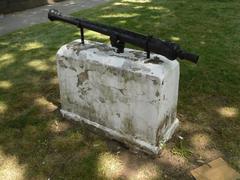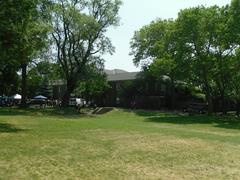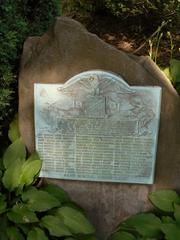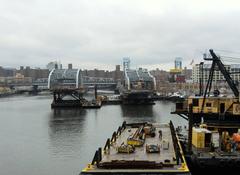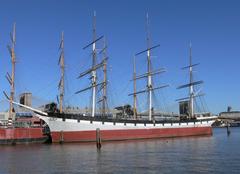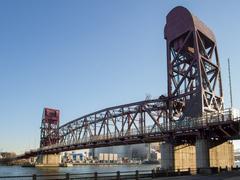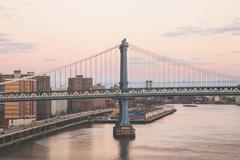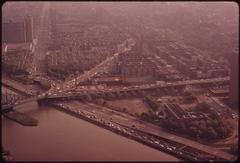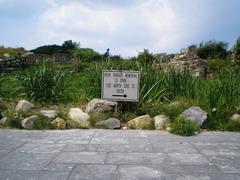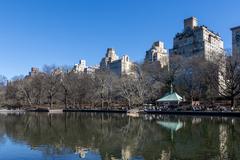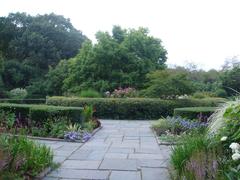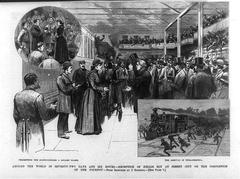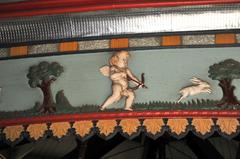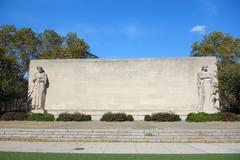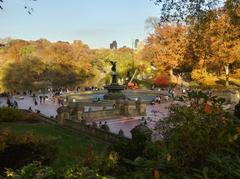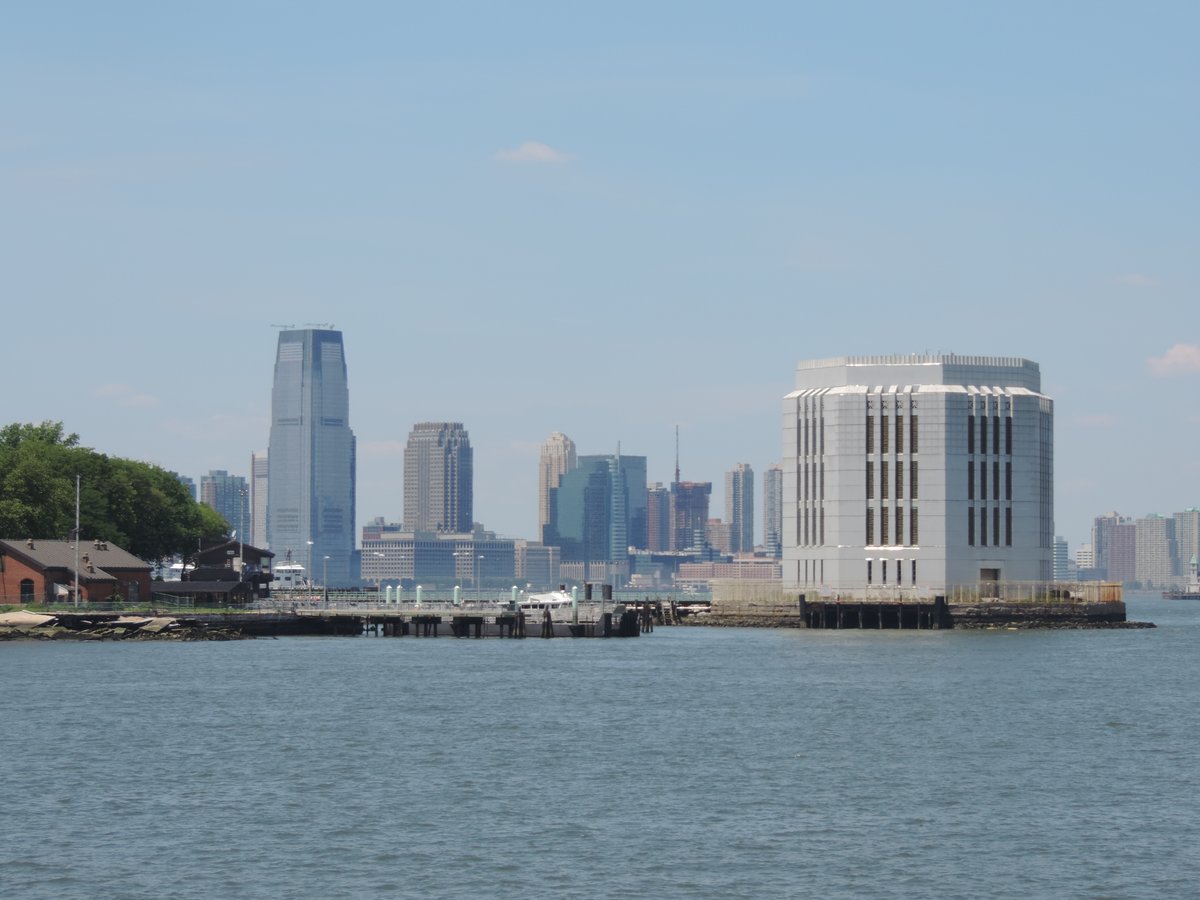
Governors Island National Monument Visiting Guide: Hours, Tickets, and Tips
Date: 18/07/2024
Introduction
Governors Island, a 172-acre gem nestled in the heart of New York Harbor, offers an unparalleled blend of historical importance and modern-day allure. Accessible only by ferry, this unique destination provides a quick escape from the urban hustle of Manhattan and Brooklyn. It’s a must-visit for history enthusiasts, nature lovers, and those seeking a tranquil getaway. The island’s rich history stretches back to its days with the Lenape people, through its transformation into a strategic military outpost during British and American rule, and finally to its current status as a public park and cultural hub. This comprehensive guide will navigate you through the island’s storied past, practical visitor information, and must-see attractions, ensuring you make the most of your visit to this iconic New York City landmark. Whether you are interested in exploring historic fortifications like Fort Jay and Castle Williams, enjoying the scenic views from The Hills, or participating in the island’s vibrant cultural events, Governors Island promises a memorable experience. (Governors Island National Monument)
Table of Contents
- Introduction
- History and Significance
- Early Inhabitants and Colonial Rule
- A Strategic Outpost: British Control and Fortifications
- A Military Bastion: From the Civil War to the World Wars
- A Changing Landscape: Post-War Period and Closure
- A New Era: Rebirth as a Public Park and Cultural Hub
- Preserving the Past: National Monument Designation
- Visitor Information
- Exploring the Island
- Guided Tours
- Tips for Exploring the Island
- Special Events and Photographic Spots
- FAQ Section
- Conclusion
History and Significance
Early Inhabitants and Colonial Rule
Long before European arrival, the Lenape people called the island home, referring to it as “Paggank” or “Nut Island” for its abundance of nut-bearing trees. The Dutch claimed the island in 1624, renaming it “Noten Eylant” (Nut Island). In 1637, it was granted to Wouter van Twiller’s nephew, Cornelis Van Tienhoven, as a tobacco plantation, although conflicts with local tribes hindered its success.
A Strategic Outpost: British Control and Fortifications
In 1664, the British seized New Amsterdam, renaming it New York, and with it, Governors Island. They recognized its strategic location and designated it for the exclusive use of the colonial governor. Fort Jay was erected in the late 1700s, followed by Castle Williams in the early 1800s. These fortifications were crucial in the Revolutionary War and the War of 1812.
A Military Bastion: From the Civil War to the World Wars
Governors Island served various military purposes from the Civil War through the World Wars. It was a prisoner-of-war camp during the Civil War and later became the headquarters of the U.S. Army’s First Army. During WWI and WWII, it was a major embarkation point and administrative center.
A Changing Landscape: Post-War Period and Closure
After WWII, Governors Island remained under military control until the Coast Guard took over in 1966. The base was decommissioned in 1996, ending two centuries of military presence.
A New Era: Rebirth as a Public Park and Cultural Hub
Governors Island reopened to the public in 2005, transforming into a unique urban park managed by The Trust for Governors Island. Visitors can explore historical fortifications, sprawling parkland, art installations, and enjoy cultural events.
Preserving the Past: National Monument Designation
In 2001, President Clinton designated 240 acres of Governors Island as a National Monument, managed by the National Park Service, ensuring the preservation of its rich history and unique military architecture. (Governors Island History)
Visitor Information
Visiting Hours and Tickets
Governors Island is open from May to October, with varying visiting hours. Tickets are required for the ferry, which operates from Manhattan and Brooklyn. Check the official Governors Island website for the latest information on visiting hours and ticket prices.
Accessibility and Travel Tips
The island is accessible by ferry, which operates daily during the open season. Bicycles, strollers, and wheelchairs are welcome. Consider visiting on weekdays for a quieter experience.
Nearby Attractions and Special Events
Governors Island frequently hosts special events, concerts, and festivals. Nearby attractions include the Statue of Liberty, Ellis Island, and the Brooklyn Bridge. Guided tours are available, offering deeper insights into the island’s history.
Unique Features
The island offers stunning photographic spots with breathtaking views of the Statue of Liberty, the Manhattan skyline, and New York Harbor. Art installations and seasonal gardens add to the island’s charm.
Exploring the Island
By Foot
Governors Island’s layout is pedestrian-friendly, with well-maintained paths and walkways connecting its key attractions. Walking allows for a leisurely experience, providing ample opportunity to appreciate public art installations, architectural details, and scenic views.
Key walking paths include:
- Governors Island Promenade: This paved path circumnavigates the island, offering stunning vistas of the Statue of Liberty, Ellis Island, and the Lower Manhattan skyline.
- Hammock Grove: A relaxing oasis featuring 50 hammocks nestled among native trees, perfect for a midday break.
- The Hills: These man-made hills offer panoramic views from various vantage points and are interconnected by winding pathways.
By Bike
Cycling is a popular way to navigate the island, covering more ground and enjoying the refreshing island breeze.
Options for biking include:
- Bringing your own bike: The ferry allows bikes onboard for free.
- Renting a bike: Various bike rental options are available on the island, including Citi Bikes and Blazing Saddles.
Recommended bike routes:
- The Island Loop: A leisurely 2.2-mile loop around the island’s perimeter, suitable for all ages and skill levels.
- The Hills Challenge: A more challenging route incorporating the inclines and declines of The Hills, offering rewarding views.
Other Modes of Transportation
While walking and biking are encouraged, other transportation options are available for those with accessibility needs or who prefer alternative methods:
- Governors Island Tram: A free tram service operates on the island, providing transportation between designated stops.
- Accessibility: The island is generally accessible to visitors with disabilities, with paved paths, ramps, and accessible restrooms. For specific accessibility inquiries, visitors can contact Governors Island visitor services.
Guided Tours
For a more structured exploration, consider joining a guided tour:
- Walking Tours: Offered by various organizations, these tours delve into the island’s history, ecology, and public art.
- Bike Tours: Guided bike tours provide a unique perspective of the island while covering more ground.
Tips for Exploring the Island
- Wear comfortable shoes: Whether walking or biking, comfortable footwear is essential for navigating the island’s varied terrain.
- Bring water and snacks: While food and beverage options are available on the island, it’s advisable to bring your own refreshments, especially during peak season.
- Check the ferry schedule: Ferry service operates on a set schedule, so plan your arrival and departure accordingly.
- Allow ample time: Governors Island offers a wealth of things to see and do, so allocate sufficient time to fully enjoy your visit.
- Respect the environment: Help preserve the island’s natural beauty by staying on designated paths, disposing of trash properly, and respecting wildlife.
Special Events and Photographic Spots
Governors Island hosts various special events throughout the year, including art exhibitions, cultural festivals, and outdoor concerts. Don’t miss the chance to capture stunning photos at iconic spots like The Hills and the Promenade.
FAQ Section
Q: What are the Governors Island visiting hours?
A: The island is open from May to October, with varying hours. Check the official website for current information.
Q: Do I need tickets to visit Governors Island?
A: Yes, tickets are required for the ferry. Prices and schedules are available on the official website.
Q: Are there guided tours available?
A: Yes, guided tours are available and highly recommended for a comprehensive understanding of the island’s history.
Conclusion
Governors Island is a testament to New York City’s rich historical tapestry and its ability to transform and adapt through the ages. From its early days as a Lenape settlement to its pivotal role in America’s military history, and now as a thriving public park and cultural hub, the island encapsulates the dynamic spirit of the city. Whether you’re walking through the serene Hammock Grove, cycling along the Island Loop, or exploring the historic Fort Jay, each corner of Governors Island offers a unique story and experience. The island’s accessibility and variety of activities make it an ideal destination for visitors of all ages and interests. By planning your trip carefully and taking advantage of the resources and tips provided in this guide, you’re sure to have a fulfilling and enjoyable visit. Don’t forget to check out the island’s special events, guided tours, and scenic spots to capture those unforgettable moments. For the latest updates, visit the official Governors Island website and consider downloading the Audiala mobile app for real-time information and more travel tips. Your adventure awaits on Governors Island, where history meets the present in the most captivating way. (Governors Island Visitor Guide)


